


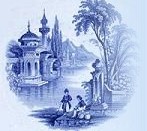
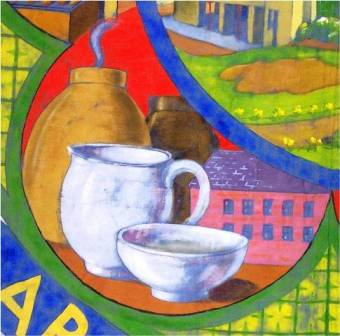
DR. JOHN ROEBUCK
John Roebuck was born in Sheffield in 1718.
In 1749, he came to Scotland with his business partner, Samuel Garbett, setting up their Sulphuric Acid industry in Prestonpans.
Then in 1759, he, along with his three brothers, Thomas, Ebenezer and Benjamin, Samuel Garbett, William Cadell, senior, and William
Cadell, junior, founded the Carron Ironworks near Falkirk.
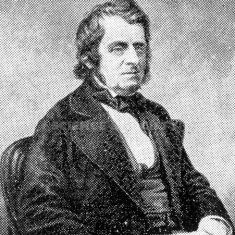
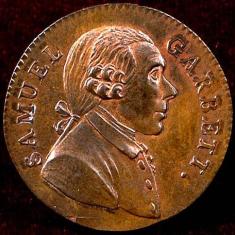
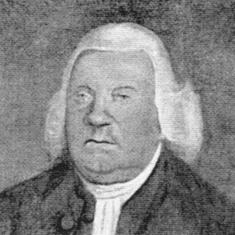
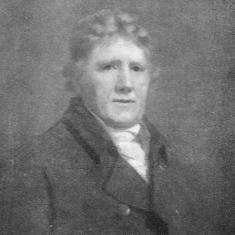
Dr. John Roebuck
Samuel Garbett
William Cadell, senior
William Cadell, junior
Some websites say the image of John Roebuck, above, is "our" John, others say it is his grandson, John Arthur Roebuck, an 19th
century politician.
We may or may not have an image but the following description of the “good doctor” was given in an article by M H Metcalfe:
He was a man of middle stature, square in frame without being stout, ruddy in complexion with finely modelled features, which a bright
hazel eye made luminous and pleasant. Attired for the most part in faded black he, when at Carron, and not in chatty converse with the
more intelligent of the skilled workmen whom he brought there from time to time, was often to be found musing on the banks of the river
Carron. Freemasonry took his interest, he was a member of Lodge Pythagoric at Bo'ness.
In 1764, Dr. Roebuck moved to Kinneil House in Bo’ness.
His coal mines in the western half of Bo’ness not only supplied the Carron Works but also fired his numerous salt pans lining the
shoreline from Kinneil to Bo’ness. The mines were plagued with flooding and James Watt was invited to Kinneil to develop his steam
engine. Prototypes were installed in several mines, but after a particularly bad flood the mines had to close and John Roebuck became
bankrupt.
He then set out on a new venture, nominally operating under the name of his eldest son John, in order to avoid his creditors.
He took over the South Pottery, which was west of the Bog and to the south of Main Street. This was a primitive place making coarse
brownware from the local clay. According to the Statistical Accounts for 1796, this pottery began in 1784. On Whitsunday 1787, he
leased premises to the north of Main Street, from the Duke of Hamilton, on a 99 year lease at £9.5s. per annum.....
..... THE BO'NESS POTTERY WAS BORN
At the outset, it is possible that Dr. Roebuck acquired skilled labour from his former partners, the Cadells, who had the pottery at
Prestonpans. Not content with making coarse brownware from the local clay he imported clays from Cornwall, Devon and Dorset and
was soon making fine cream-coloured and white stonewares of a good quality. Flint was imported from Gravesend, Kent. The flint was
ground at Tod's Mill, a converted malt mill on the nearby River Avon. Flint kilns had been built there to allow the flintstones to be
calcined prior to grinding.
By 1789, the pottery was supplying dealers in East and Central Scotland and the Customs accounts for this period showed an export
trade to the principal European ports.
By 1793, Roebuck had considerably expanded the works and had built extensions to the original premises.
A punch bowl from the Bo’ness Pottery bearing the date 1794 is said to have been shown at the International Exhibition in Glasgow.
Most of these bowls had mottoes, and two favourites with the Bo’ness pottery artists were:
Following Dr. John Roebuck's death on the 15th July 1794, his son, John, sold the business to Thomas Cowan.
What art can with the potter’s art compare?
For of what we are ourselves, of such we make our ware.
Will the Love that you are rich in,
Make the fire that’s in the kitchen?
For of what we are ourselves, of such we make our ware.
Will the Love that you are rich in,
Make the fire that’s in the kitchen?
In 1877, the local Courier ran an article on the Bo'ness Pottery and had this to say about Dr. Roebuck:
It would appear that Dr. Roebuck, as early as 1766 had feud the site, but for what purpose of manufactory it is not now very clearly
known. Indeed it may safely be inferred that the great speculator had not definitely fixed in his own mind the exact nature of the works
which he was about to establish upon the site, for it had long been stated, by his biographers with much show of reason that Dr.
Roebuck left behind him 'many works but few writings’.
In one locality he would organise and set on foot some important scheme or other, and carry on the operations connected with it with
great vigour, and from which, if he had followed up with the same diligence and perseverance as he had manifested at the outset, he
would have soon made a fortune, but the enterprising spirit would not let him rest, and he was accordingly soon led off from his first
project to another, perhaps no less important, but in a different locality, and so on. As it was impossible to superintend the different
works himself, he therefore, left the working out of his schemes to his partners, or abandoned them altogether, and looked out for a new
field of operations.
He was certainly a great and wonderful man, but he never succeeded in making a fortune owing to his speculative and unsettled will.
The epitaph on John Roebuck's headstone (photo at foot of page) is written in Latin, the English translation follows:
Underneath this tombstone rests no ordinary man
JOHN ROEBUCK, M.D.
who, of gentle birth and of liberal education, applied his mind to almost all the liberal arts.
Though he made the practice of medicine his chief work in his public capacity to the great advantage
of his fellow citizens, yet he did not permit his inventive and tireless brain to rest satisfied with that,
but cultivated a great number of recondite and abstruse sciences, among which were chemistry and metallurgy.
These he expounded and adapted to human needs with a wonderful fertility of genius and a high degree of
painstaking labour; whence not a few of all those delightful works and pleasing structures which decorate
our world, and by their utility conduce to both public and private well-being he either devised or promoted.
Of these the magnificent work at the mouth of the Carron is his own invention.
In extent of friendship and of gentleness he was surpassing great, and, though harassed
by adversity or deluded by hope and weighed down by so many of our griefs,
he yet could assuage these by his skill in the arts of the muses or in the delights of the country.
For most learned conversation and gracious familiarity no other was more welcome or more pleasant
on account of varied and profound learning, his merry games and sparkling wit and humour.
And, above all, on account of the uprightness, benevolence, and good fellowship in his character.
Bewailed by his family and missed by all good men, he died on the Ides of July, AD 1794, aged 76,
in the arms of his wife, and with his children around him.
This monument - such as it is - the affection of friends has erected.
When did Dr. John Roebuck die?
There are many websites that state that John Roebuck died on the 17th July 1794. Regardless of the number of sites that make this
claim, all of them are WRONG.
Roebuck's headstone tells us that he died on the Ides of July (i.e. 15th) but unfortunately this is written in Latin and us non-Latin
scholars have to take the translator's word for that.
However, the Parish Records for Carriden give us the answer. Copyright law does not allow me to show the original hand written entry
but the record clearly states:
Dr John Roebuck tack’s man of Bo-ness
Coal Work died of old age the fifteenth and
was buried in the New Church yard of Carridden
the ninteenth July 1794 years.
Had the best big Mortcloth and big Bell rung
Dr Roebuck
8/2
(8/2 (8s 2d) was the cost of the hire of the Mortcloth and for the ringing of the big Bell)
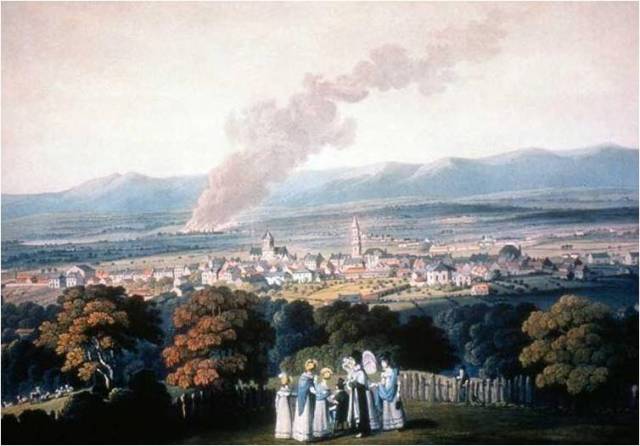
The smoke-belching Carron Ironworks c1790
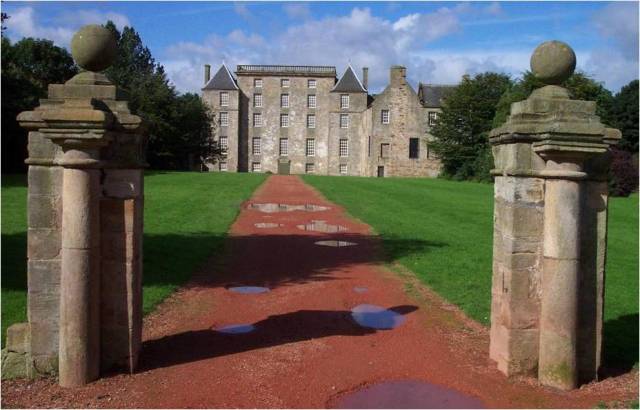
Kinneil House
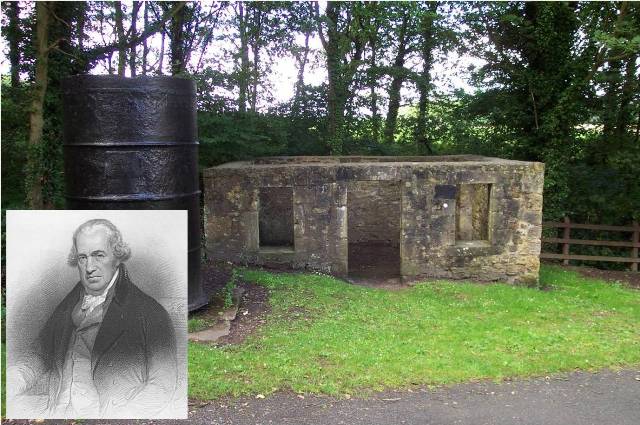
James Watt and his workshop at Kinneil
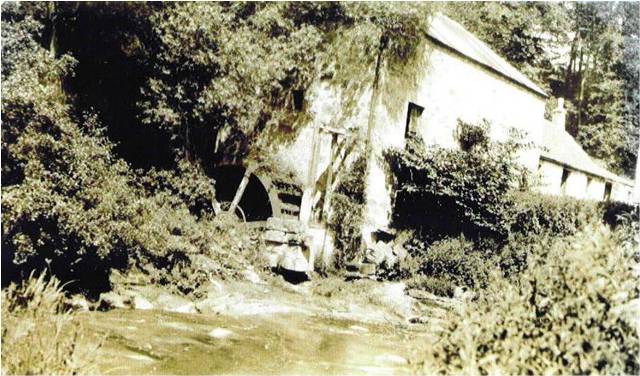
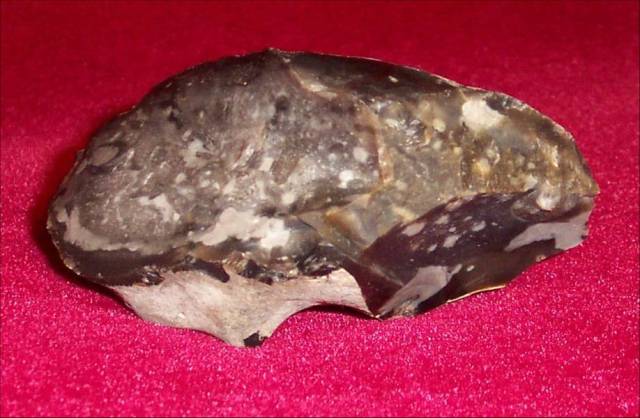
Piece of flint from Tod's Mill site
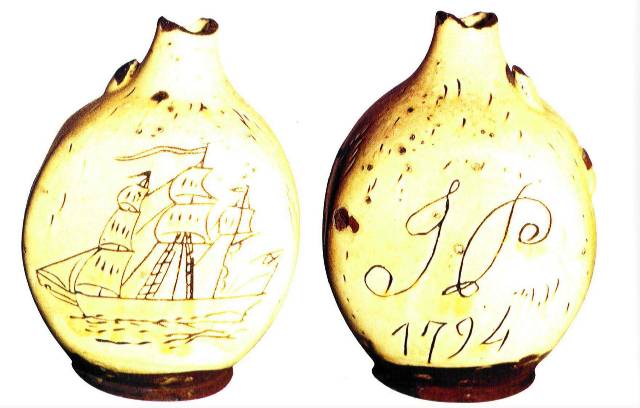
Both sides of water bottle made at Bo'ness Pottery in 1794
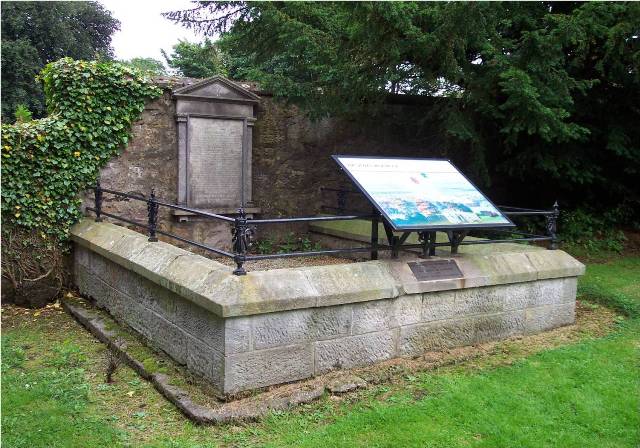
John Roebuck's grave at Carriden
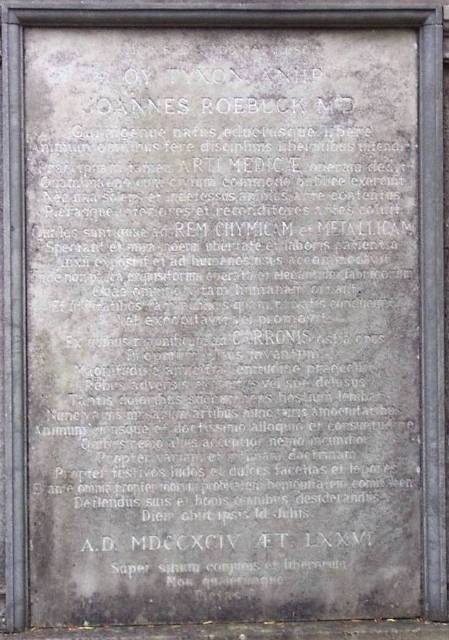
John Roebuck's headstone